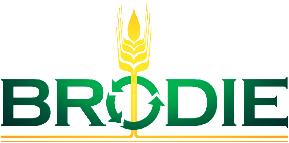This article, written by Canadian researchers, describes the results of a survey on shipment behaviours of Canadian dairy producers. The survey tried to understand farmer perspectives on the factors that were most influential in their decision to cull a cow. The survey was nationwide between March and April 2015 and included 192 questions.
As background information, the article refers that commercial dairy herds typically remove approximately 30% of their herd each year. Although many of these are healthy cows culled for poor reproductive performance or low production, many others are culled due to the presence of injury or clinical disease. As a result, dairy cattle health represents one of the primary reasons for culling with some of the most common reasons being mastitis, feet and leg problems, and sickness.
The authors say that, given the risk these conditions can pose to cow welfare, the corresponding decisions around when and where to ship each cow are very important. They refer that one of the aspects with potential greater impact on the well-being of cull cows is transportation, regardless of their health status. This is particularly important in Canada and the U.S., due to the geographic size of these two countries. In fact, studies have shown that the most prominent risk factors for many of the potential negative health outcomes of cull cows (cows becoming lame, non-ambulatory, wounded, etc.) are lengthy shipping times (more than 30 hours), long distances (more than 400 kilometres), ambient temperatures above 20°C and high stocking density.
Overall, 1,373 Canadian producers responded to the survey. According to the answers, the ability of the cow to remain standing and drug withdrawal times were identified as the most important factors for consideration when culling cows. The time between culling decision and when the cow is actually transported was longer for lame cows than sick cows. (Almost 70% of respondents reported that time between the decision to cull a cow due to illness and time that the cow actually left the farm was less than a week.)
Finally, Canadian dairy producers generally exhibited strong confidence their culled cows would arrive at slaughter in the same condition as they left but felt very unsure about knowing the location of their final destination. The levels of self-reported confidence observed may therefore represent an important gap in producer knowledge of how a cow’s condition may degrade while in the marketing system. These results highlight several gaps between producer perceptions and the true situation, and can be used to develop tailored programs and inform policy and regulatory decisions aimed at improving cull cow decisions and cow welfare.
“Early genomic prediction of Daughter Pregnancy Rate is associated with improved reproductive performance in Holstein dairy cows” Journal of Dairy Science Vol. 103 No.4, 2020. This article, written by researchers from Illinois and Florida universities and Zoetis, assessed the relationship between early genomic prediction of Daughter Pregnancy Rate (DPR) and pregnancy at the first service, pregnancy at the end of lactation, number of services for conception, days from calving to first service and days open.
They used data for the genomic prediction of daughter pregnancy, milk production and reproductive outcomes from 1,401 multiparous and 3,044 primiparous Holstein cows from four commercial farms with the same reproductive management for their analysis. The authors provide some background information on the usefulness of genomic studies referring that phenotypic and genetic trends for milk production and DPR in U.S. Holsteins moved in opposite directions between the early 1960s and early 2000s. During those four decades, the breeding values for milk production for the Holstein population increased about 3,000 kilograms.
However, this success was accompanied by a decline in cow fertility, such that infertility became a major concern of farmers and the dairy industry. They indicate that genetic evaluations for DPR were introduced in the breeding programs in the U.S. in 2003 with the intent to mitigate the decline in fertility. This, along with the development of timed- A.I. protocols and improvements in reproductive management, nutrition and herd health reversed the phenotypic decline in fertility in the U.S. Holstein population and increased the genetic trend in DPR. Still, the authors add, despite the reversed trend in reproductive performance, breeding values of DPR remain remarkably lower than in 1960, referring data from the USDA from 2019.
DPR is a measurement of the hazard of pregnancy after calving (pregnancy risk for 21-day interval cycles after the voluntary waiting period) of a bull’s daughters compared with the concurrent population. One of the problems with DPR is that it is a trait with low heritability (the ability to pass, genetically, that characteristic to descendants), usually less than 10%.
That is where genomics can be helpful. The article refers that genomic tools offer new opportunities to use DPR as selection criteria to improve dairy cow fertility, indicating that genomic prediction for DPR (GDPR) led to a gain in reliability of 17%. It is important to know the benefit of genomics is the greatest for lowly heritable traits and traits that can be measured only late in life, such as fertility.
The study concluded that the highest quartile for GDPR was associated with fewer days to first service, greater pregnancy at first service, fewer services to pregnancy, fewer days to pregnancy at the end of lactation and a greater proportion of pregnant cows at the end of lactation. Significant interactions between milk production and GDPR were not apparent for most of the reproductive traits evaluated. Farm-year-season had a substantial effect on all traits, highlighting the influence the environment has on dairy cow reproductive performance. The current findings underscore the idea that producers should integrate GDPR as part of the production management program in a manner complementary to milk production to improve both profitability and sustainability of dairy farming. ![]()
This column brings you information regarding some of the research being done around the world and published in the Journal of Dairy Science. The objective is to bring to light areas of research that may have an immediate practical application on a dairy farm, as well as research that, even though it may not have a practical impact now, could be interesting for its future potential application. The idea is to give a brief overview of select research studies but not go into detail on each topic. Those interested in further in-depth reading can use the citations to find each study.

-
Pedro Nogueira
- Nutritionist
- Shur-Gain
- Email Pedro Nogueira









